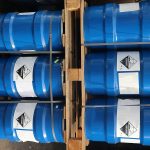GHS in Canada and the United States – What is the expectation for compliance?
By: Kirsten Alcock, Principal Product Safety Consultant, email
Over the last couple of months, there has been much talk about moving forward to Version 7 of the GHS for the United States and Canada. I just wanted to provide a re-cap as we go into 2022 and what the expectations are.
During the HCPA/ISSA Virtual Event in late 2021, we were given a presentation from OSHA on the status of the GHS. This presentation was similar to the one we received through the Society of Chemical Hazard Communication (SCHC) Virtual meeting a couple of weeks previous to this. During the meeting, an individual asked OSHA in the question/answer period about when we can expect to see the final rule. As advised by Janet Carter, they are hoping for December 2022. I contacted Janet directly via email and this timeline was confirmed.
OSHA has indicated that December 2022 is the earliest they could finalize the rule. They are working hard to meet or be near that timeline as it corresponds with an estimate they received from Health Canada representatives. OSHA would like to be in alignment with Canada on the adoption of GHS Version 7.
I know we all wanted to move forward now with the changes that were proposed but we will have to wait until we receive further guidance from both OSHA and Health Canada. What are the expectations now that the GHS Version 7 changes are not to occur until December 2022 at the earliest?
- Continue to ensure that your SDSs and labels are in compliance with current regulations.
Some provinces in Canada require that the SDSs be looked at every three years. Although federally the three-year renewal was abolished when the Hazardous Products Regulations were adopted, some provinces wanted you to keep your SDSs updated (Ex. BC).
- Continue to use the appropriate guidance on Trade Secrets for Canada – this WILL NOT be changing.
Canada requires that you register for your Trade secret if the hazardous component requires disclosure on the SDS and you prefer to keep the chemical name and CAS number confidential.
- Continue to update your SDSs if new information becomes available on the formulations, the raw materials, shipping classifications, etc.
Many companies have continued to put this off but you are putting the users at risk if a change is needed. Is a chemical now considered a carcinogen and do you lack the GHS classification for it? If so, your SDS/label is incorrect. The user is at risk but you are also at risk of non-compliance with Health Canada and OSHA.
We highly suggest that you continue to look at your formulations, create and update SDSs and labels in compliance with the current regulations. One cannot proceed with the GHS Version 7 yet.
For further information on our SDS authoring services or help interpreting the regulations, please contact me.
Dell Tech
Kirsten Alcock, B.Sc. (Hons)
Principal Product Safety Consultant
519-858-5074
kirsten@delltech.com
Dell Tech has provided professional, confidential consulting services to the chemical specialty
industry in Canada, the USA, Europe, and Asia for the last 40 years.
Contact us today for more information.
www.delltech.com





